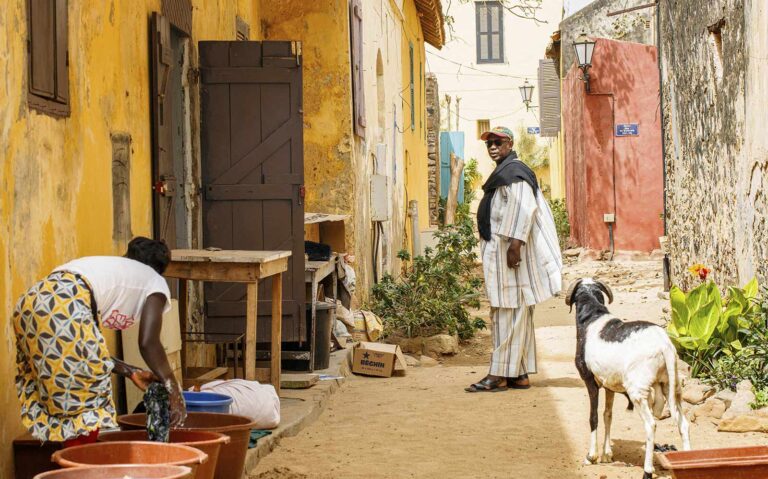treslunasviajes
30 de January de 2025
The Cultural Traditions of Casamance, Senegal

The cultural traditions of Casamance are a rich and vibrant blend of music, dance, spirituality, art, and connection with nature.
These traditions are not only a reflection of the region’s identity but also a form of cultural resistance that remains alive today.
They are fundamental to understanding life in Casamance and offer visitors a deep appreciation for the practices and beliefs that continue to be an integral part of daily life.
1. Music and Dance
Music and dance are an essential part of Casamance’s culture and are used on many occasions to celebrate both personal events and religious and traditional festivities.
- The Balafon: This percussion instrument, similar to a xylophone, is typical of the region. The balafon is crucial in many ceremonies and cultural events, as music serves as an ancestral form of communication. Musicians in Casamance often perform melodies that tell stories or celebrate significant events.
- Traditional dances: The dances of Casamance are colorful and full of energy. Each ethnic group has its own styles and movements that reflect their beliefs and daily life. Dances can be part of rituals, weddings, births, or harvest celebrations and are usually accompanied by singing and drumming.
2. Rituals and Spiritual Ceremonies
Spirituality in Casamance is strongly influenced by both animism and Islam, creating a unique syncretism. Rituals and ceremonies are often linked to agriculture, family, and connection with ancestors.
- Ancestral rituals: Among the Diola and other communities, there is a deep connection with the land and ancestors. Ceremonies are held to give thanks to the spirits for the harvests, protect the land, and ensure the well-being of the community. Elders and shamans play key roles in these spiritual practices.
- Islam and religious ceremonies: The population of Casamance is also predominantly Muslim, and religious festivities such as Ramadan and the celebration of “Tabaski” (Eid al-Adha) are observed with great fervor. The blending of animist and Islamic customs creates a unique perspective on spirituality and the world.
3. Handicrafts
The traditions of Casamance are also reflected in local handicrafts. These handmade products are not only practical but also carry deep cultural significance.
- Textiles and clothing: The Diola and other groups produce traditional textiles, such as hand-embroidered fabrics, which are used in ceremonies and festivals. Clothing items like boubous and turbans are part of daily wear but are also worn on special occasions.
- Palm weaving and woodcraft: Objects such as baskets, trays, and utensils made from palm materials are common in the region. These items are not only functional but are also decorated with symbolic patterns. Wooden carvings, often representing ancestral or spiritual figures, are also widely appreciated.
4. Festivities and Celebrations
Celebrations play a key role in keeping traditions alive in Casamance. These events bring together music, dance, food, and spiritual rituals.
- Weddings and initiation rituals: Weddings in Casamance are not just a union between two people but a celebration that involves the entire community. In some communities, initiation rituals, where young people undergo ceremonies marking their transition into adulthood, are fundamental. These ceremonies include dances, songs, tests of endurance, and blessings from elders.
- Harvest festivals: Celebrations for the harvests of rice, maize, and other crops are essential. Casamance is known for its agriculture, and the harvest is seen as a time to give thanks to the land and spirits. These festivals include dances, ritual sacrifices, and communal feasts.
5. Beliefs in Ancestors and Nature
The relationship with ancestors and nature is central to many traditions in Casamance. The region has a strong spiritual connection with natural elements.
- Ancestor worship: Many communities believe that ancestors continue to influence daily life. They are honored through offerings and prayers. Ancestral tombs are considered sacred sites, and rituals performed there are essential to maintaining balance between the world of the living and the dead.
- Nature veneration: The relationship with nature is sacred. Trees, rivers, and mountains hold spiritual significance and are respected. In some villages, offerings of fruits, grains, and other natural products are made to seek protection or a successful harvest.
6. Languages and Oral Traditions
The languages spoken in Casamance play a crucial role in the transmission of culture. Diola, Mandinka, Fula, and other local languages have a rich oral tradition that includes myths, legends, proverbs, and stories passed down through generations.
- Oral storytelling: Community elders serve as storytellers and are responsible for narrating stories that teach moral and cultural lessons to the younger generations. These stories are deeply connected to nature, animals, and deities.
- Proverbs and sayings: Each community has its own collection of proverbs that reflect popular wisdom and cultural values. These proverbs are essential in daily communication and serve as a means of teaching ethics and morality.
7. The Importance of Community
In Casamance, community is at the heart of life. Cultural traditions are closely tied to the idea of collectivity, and many rituals, celebrations, and daily activities are carried out together.
- “Sogo” (collective work): Group work, known as sogo, is an essential tradition. Communities come together to work collectively in agriculture, construction, and other tasks. This sense of collaboration strengthens social bonds and ensures collective well-being.
- The role of elders and women: Elders are regarded as wise leaders and judges in the community, and their opinions are highly respected. Women, on the other hand, play key roles in cultural transmission, child education, and the organization of family events.




